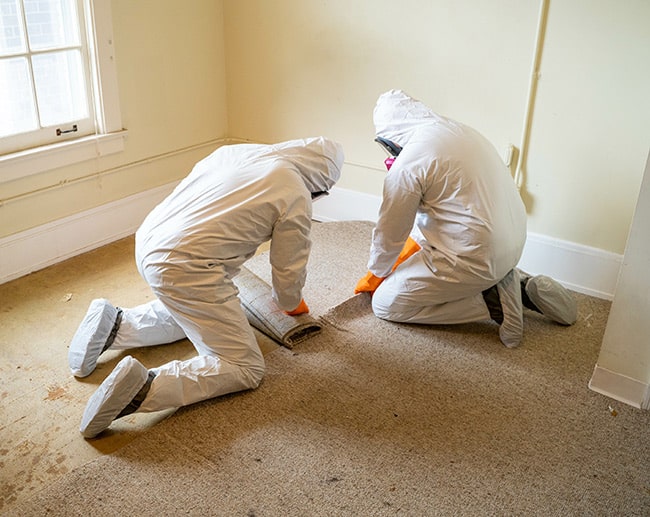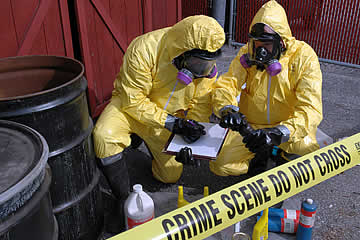Flood Damage Restoration: Quick and Reliable Recuperation for Your Home
Flood Damage Restoration: Quick and Reliable Recuperation for Your Home
Blog Article
Expert Biohazard Cleansing and Purification for Blood, Bodily Fluids, and Hazardous Products
In the realm of biohazard cleansing and purification for blood, bodily fluids, and hazardous products, precision and competence are vital. The potential health threats related to exposure to biohazards emphasize the important requirement for meticulous handling and thorough cleaning. Specialized training gears up professionals with the expertise and skills required to resolve these harmful situations properly. Nevertheless, it is not merely regarding tidying up; the relevance of utilizing correct purification techniques can not be overemphasized. As we navigate the intricate landscape of biohazard clean-up, understanding the subtleties of policies, conformity, and the specific equipment at play ends up being important in ensuring a secure and extensive decontamination process.
Wellness Risks of Biohazard Exposure
Direct exposure to biohazards postures significant health dangers that can cause extreme consequences for communities and people alike. Biohazards include a large range of organic materials, consisting of blood, physical fluids, mold, germs, infections, and various other possibly contagious products. When people come right into call with these biohazards, whether via crashes, improper handling, or ecological direct exposure, they encounter the threat of contracting serious diseases or diseases.
Among the main health and wellness threats related to biohazard direct exposure is the transmission of transmittable diseases. Bloodborne virus such as HIV, liver disease B and C, and different germs can be present in biohazardous materials, posing a straight danger to human health and wellness. Inhaling airborne biohazards like mold and mildew spores or entering contact with contaminated surface areas can likewise result in respiratory concerns, allergic reactions, and other damaging wellness impacts.
Additionally, biohazard direct exposure can have long-lasting health implications, with some conditions manifesting years after the preliminary contact (Blood Cleanup). Therefore, it is critical to prioritize proper biohazard cleansing and decontamination to minimize these health and wellness risks and make sure the safety of people and neighborhoods

Specialized Training for Biohazard Cleaning
When it comes to dealing with biohazard cleaning successfully and safely, specialized training plays an essential duty in ensuring proper decontamination treatments are adhered to. Biohazard cleanup needs details expertise and skills to efficiently minimize risks related to bloodborne microorganisms, bodily fluids, and harmful products. Specialists trained in biohazard clean-up go through extensive direction on exactly how to securely manage, get rid of, and dispose of biohazardous materials to stop contamination and exposure.
Specialized training for biohazard cleanup covers a range of vital topics, including proper personal protective tools (PPE) use, bloodborne virus recognition, purification strategies, and contaminated materials disposal protocols. Individuals learnt biohazard cleaning are outfitted with the needed expertise to analyze contamination degrees, determine prospective risks, and execute appropriate cleaning treatments in conformity with regulatory requirements.
Continuous training and education and learning are extremely important in the area of biohazard clean-up to stay upgraded on the current purification innovations, safety methods, and guidelines. By buying specialized training, biohazard cleanup specialists can successfully react to emergency situation clean-up situations and guard both public wellness and the atmosphere.
Importance of Correct Decontamination Techniques
Making use of appropriate purification strategies is vital in biohazard cleanup to properly minimize and get rid of hazardous products health dangers. Effective purification not only makes sure the removal of noticeable traces of blood, physical fluids, and various other biohazards recommended you read but likewise targets unseen microorganisms that might present major wellness hazards if not correctly gotten rid of. By complying with rigorous decontamination procedures, educated professionals can dramatically decrease the danger of direct exposure to dangerous bacteria, infections, and microorganisms that could cause infections or conditions.
Appropriate purification strategies entail using specific tools and disinfectants that are specifically developed to counteract biohazards properly. Extensive cleansing and sanitation of infected locations are vital to avoid the spread of microorganisms and make sure a secure setting for owners. In addition, the correct disposal of biohazardous waste following decontamination procedures is vital in avoiding contamination of other surfaces or individuals.

Tools and Devices for Safe Cleanup
The proper tools and tools play a vital function in ensuring the efficient and safe clean-up of biohazardous products. When handling blood, physical fluids, or hazardous products, biohazard cleaning specialists rely upon specialized gear to lessen exposure threats and completely sanitize the afflicted location. Personal safety devices (PPE) such as handwear covers, coveralls, masks, and goggles are vital to protect against straight contact with possibly infectious products. Additionally, biohazard cleaning packages including anti-bacterials, absorbent products, and biohazard bags are made use of to safely have and dispose of contaminated products. Blood Cleanup.
Advanced cleaning tools like hospital-grade anti-bacterials, HEPA-filtered vacuums, and fogging makers are used to sanitize surfaces and eliminate biohazards successfully. Specialized tools such as sharps containers and biohazard waste disposal bins are used to securely take care of sharp things and biohazardous waste materials. By using the ideal tools and tools, biohazard cleaning experts can make sure a thorough cleanup process that right here focuses on security and minimizes health risks for both workers and occupants of the affected space.
Regulations and Compliance in Biohazard Cleaning
Proper adherence to regulations and compliance requirements is vital in biohazard cleansing to make sure the safety and security of both workers and the setting. Federal government companies such as OSHA (Occupational Security and Health Administration) and the EPA (Epa) have developed specific standards for biohazard clean-up procedures to reduce health threats and ecological contamination. These guidelines cover a variety of elements including the handling, transportation, and disposal of biohazardous products, in addition to the required training and protective devices required for personnel associated with the cleaning process.
Biohazard cleaning business have to stay up-to-date with these guidelines to guarantee that their procedures satisfy the needed security criteria. Failing to abide by these guidelines can cause severe repercussions, including penalties, lawsuit, and threatening the health and wellness of people and the setting. By complying with strict laws and conformity actions, biohazard cleaning firms can properly reduce threats and make sure a risk-free and thorough clean-up procedure for all celebrations entailed.
Conclusion
Finally, biohazard cleaning and decontamination call for specialized training, appropriate strategies, and adherence to policies. Direct exposure to blood, physical fluids, and dangerous products poses considerable wellness threats, making it essential to utilize the appropriate equipment and tools for risk-free cleaning. By following strict procedures and standards, specialists can effectively reduce the risks related to biohazard direct exposure and ensure the safety of both themselves and others.
As we navigate the elaborate landscape of biohazard clean-up, recognizing the subtleties of laws, conformity, and the customized equipment at play becomes necessary in making sure a thorough and safe decontamination procedure. (Blood Cleanup)
When it comes to handling biohazard cleanup efficiently and securely, specialized training plays a basic duty in making certain correct purification treatments are complied with.Using appropriate decontamination techniques is essential in biohazard cleanup to efficiently lessen and get rid of dangerous materials health threats. Furthermore, biohazard cleaning kits containing anti-bacterials, absorbing materials, and biohazard bags are used to securely get rid of and have of polluted items.
Federal government companies such as OSHA (Occupational Security and Health Management) and the EPA (Environmental Security Agency) have actually established webpage details standards for biohazard cleanup treatments to reduce health threats and environmental contamination.
Report this page